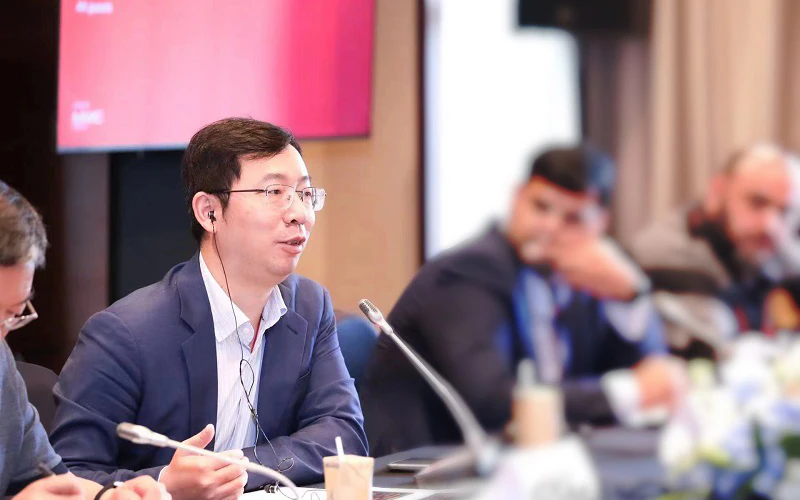During MWC Shanghai 2024, GSMA hosted the 5G-A Industry Roundtable to bring together global regulators, operators, equipment vendors, research institutes, and vertical industry leaders. Participants shared their network construction and application achievements during the evolution from 5G to 5G-Advanced (5G-A) and dug into 5G-A business monetization and strategic development.
David Li, President of Huawei’s 5G<E TDD Domain, said during the meeting, "The commercial launch of 5G-A in 2024 in the context of booming AI presents the mobile sector with a fresh opportunity. Huawei has consistently innovated in four core technologies to build green, seamless 5G-A connections that provide always-on services. Looking forward, we will continue to work closely with global partners to leverage the deterministic network capabilities to embrace infinite possibilities brought by the flourishing applications in the AI era."
During this meeting, representatives from world-leading operators, such as China Unicom Beijing, China Mobile Yunnan, and du UAE, shared their experience in 5G and 5G-A network construction and business monetization. For example, more advanced network capabilities can bring diverse mobile applications, making it possible to provide a differentiated user experience that is key to multi-dimensional 5G-A monetization. Besides, high-quality 5G networks are the cornerstone of 5G-A deployment. Enhancing 5G capabilities in residential areas, high-speed railways, as well as urban and rural areas can help establish a multi-functional 5G-A network. Additionally, end-to-end smart operations empower operators to gain comprehensive insights into network issues, self-healing, and optimization, maximizing network efficiency and improving user experience.
Industry partners including GSMA and Omdia mentioned that 5G business growth is speeding up and the time has come for 5G-A deployment. Specifically, the large-scale deployment of the 3CC technology helps achieve 5 Gbps network speed, which is perfect for immersive experiences of games, sports events, as well as audio and video entertainment. Moreover, the entire 5G-A industry chain is mature, with U6G, mmWave, and other new spectrum resources being distributed to some operators for verification. More than 30 types of terminals in the globe support 5G-A, and over 60 operators have commercially released 5G-A. Consequently, the entire industry chain needs to work together to build more efficient, intelligent, and reliable networks and applications to seize the opportunities brought by AI.
At the roundtable, Huawei officially announced the evolution direction of industry technologies from 5G to 5G-A, that is, moving towards greener mobile networks that feature more connections and a more deterministic experience through long-term innovation of the 3D extremely large antenna array (ELAA) technology, differentiated experiences, full-time all-scenario green solutions, and AI-empowered networks.
AI is rapidly reaching to PCs, mobile phones, wearables, and vehicle-mounted systems, bringing about massive connected objects, rich content, and varied user traffic models. This poses higher requirements on network capabilities while creating opportunities for new services, superior network quality, and enhanced O&M. To embrace new opportunities in the era, Huawei calls for industry-wide collaboration to promote shared success in the 5G-A industry.
2024 will mark the first year of commercial 5.5G, and F5.5G gigabit optical network deployment has already begun. Synergies across networks, cloud, and intelligence are set to give rise to pervasive intelligent applications and increasingly diverse user experiences. Together with global operators, industry professionals, and opinion leaders, Huawei will dive into exciting topics at this year’s MWC Shanghai, like how to amplify 5G’s success in the 5.5G era and how to tap into the potential of operator revenue growth to bring us even faster to the intelligent world. For more information, please visit: https://carrier.huawei.com/en/events/mwcs2024.
